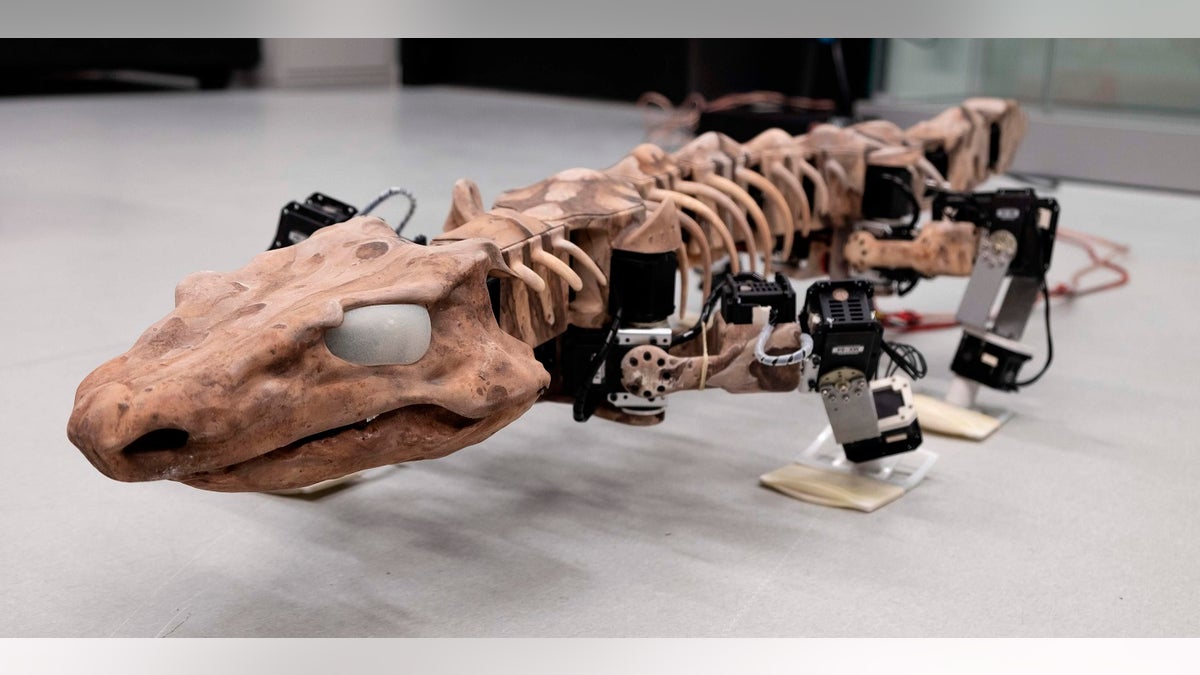
This undated photo provided by researchers in January 2019 shows the OroBOT, based on an Orobates Pabsti fossil. Scientists have used a nearly 300-million-year old skeleton and preserved ancient footprints to create the moving robot model of prehistoric life. (John Nyakatura/Humboldt University via AP)
Scientists now have an idea of how an ancient creature likely moved thanks to a nearly 300-million-year-old fossilized skeleton and a set of well-preserved footprints.
Studying the ancient fossil and a set of fossilized tracks from a plant-eating creature known as the Orabates pabsti, evolutionary biologist John Nyakatura at Humboldt University in Berlin and robotics expert Kamilo Melo at the Swiss Federal Institute of Technology in Lausanne recently created a life-size replica of the animal, which existed before the dinosaurs, scientists say.
REVOLUTIONARY WAR POWDER HORN RETURNED TO MUSEUM IT WAS STOLEN FROM IN 1952
"We carefully modeled each and every bone," Nyakatura told The Associated Press of the replica.
They then tested the motion in various ways that would lead its gait to match the ancient tracks, ruling out combinations that were not anatomically possible.
Later, the researchers tested the movement with a robot version of the Orabates pabsti, which was about 3 feet in length. The robot — called OroBOT — is made of motors connected by 3D-printed plastic and steel parts.
The researchers, who also compared the robot’s movement to that of iguanas and salamanders, said their findings show the Orabates pabsti had a more advanced locomotion than once thought. The creature also likely did not drag its belly or tail and "walked in a fairly upright” posture, Melo said.
ASTEROIDS HAVE BEEN CRUSHING EARTH FOR NEARLY 300 MILLION YEARS AND NO ONE KNOWS WHY
This conclusion is significant because “an upright stance goes further back than we originally thought,” Thomas R. Holtz, a paleontologist with the University of Maryland who was not part of the study, said.
The results of the study were published in the journal Nature on Wednesday.
The Associated Press contributed to this report.




















